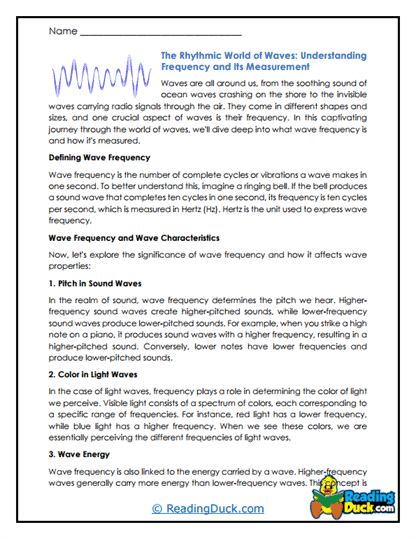
Frequency Fun Short Answer
This passage focuses on the concept of wave frequency, which refers to the number of complete cycles a wave makes in one second. It explains how frequency affects various wave characteristics, such as the pitch of sound and the color of light. The text details how higher frequencies produce higher-pitched sounds or blue-shifted light, while lower frequencies result in lower-pitched sounds or red-shifted light. By understanding frequency, students can grasp how waves carry energy and how that energy varies with different frequencies.
This passage helps students build an understanding of the relationship between wave frequency and real-world phenomena, boosting comprehension of abstract ideas. It enhances their vocabulary by introducing terms like “blue-shift” and “pitch.” The scientific content encourages analytical thinking, as students must apply these concepts to understand various types of waves. The passage also strengthens critical thinking by asking students to consider the effect of frequency on sound and light.